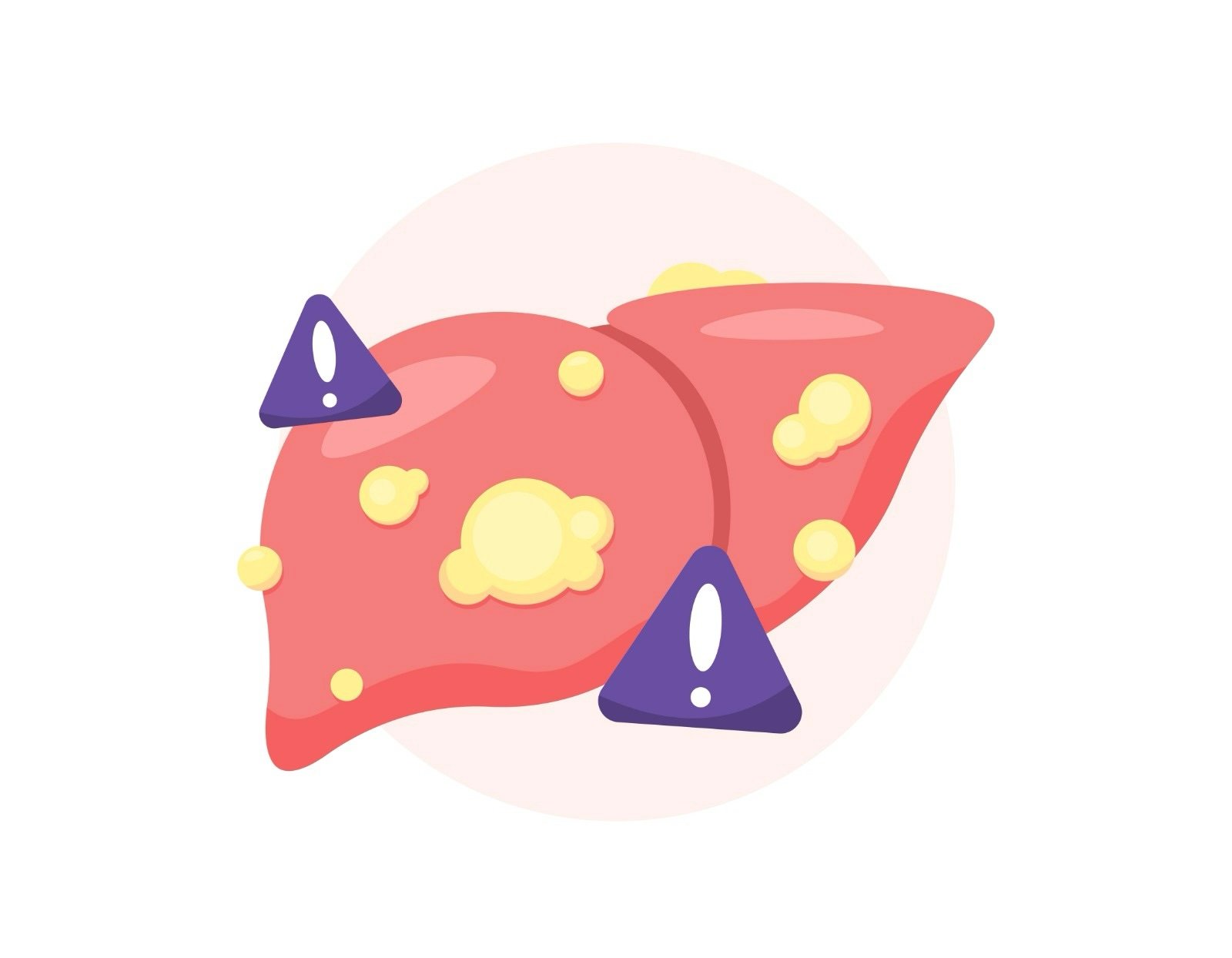The liver is the second-largest organ in the body and is responsible for the production of bile, which helps in digestion. It also removes harmful waste, bacteria, and other toxins from the blood. It regulates our metabolism by converting carbohydrates into glucose for energy. When it doesn’t function at its full capacity, complications can develop in the body, including bleeding and increased pressure in the brain.

What is Fatty Liver?
Fatty liver, also known as hepatic steatosis, occurs when fat builds up in the liver. This condition has become increasingly common due to the global rise in obesity and poor lifestyle habits. Fatty liver disease is now the most prevalent form of liver disease worldwide. While often manageable, in severe cases it can lead to liver failure or liver cancer.
Though many people with fatty liver disease experience no symptoms, some warning signs include:
- Fatigue
- Discomfort or pain in the upper right abdomen
- Itchy skin
- Shortness of breath
- Swelling in the legs
- Jaundice (yellowing of the skin or eyes)
Types of Fatty Liver
There are two main types of fatty liver disease: Alcohol-induced fatty liver disease (AFLD) and non-alcoholic fatty liver disease (NAFLD). Both share similarities, but they differ in their causes and treatments.
Alcohol-Induced Fatty Liver Disease (AFLD)
AFLD is caused by excessive alcohol consumption, which damages the liver. In its early stages, AFLD can lead to inflammation and scarring. In advanced cases, cirrhosis, the destruction of normal liver tissue, may occur. Fortunately, AFLD is often reversible if caught early and treated appropriately.
Diagnosis of AFLD may involve:
- Blood tests
- Ultrasound
- CT scan
- MRI
- Liver biopsy
Treatment for AFLD
The most crucial step in treating AFLD is stopping alcohol consumption. This allows the liver to begin healing. Patients may also be advised to follow a healthier lifestyle, including exercise and dietary changes. In severe cases, therapy or participation in alcohol use disorder treatment programs may be necessary.
One can access their health insurance apps to understand the treatments, medications, or rehabilitation services that are covered by their insurance for managing AFLD. Many health insurance apps also provide access to articles, videos, and other educational content about liver health, the dangers of alcohol-related fatty liver disease, and tips for reducing alcohol consumption.
Non-Alcoholic Fatty Liver Disease (NAFLD)
NAFLD develops in individuals who drink little or no alcohol. It is often linked to being overweight, but other factors can contribute, such as:
- Prediabetes or Type 2 diabetes
- High cholesterol
- High blood pressure
- Family history of fatty liver disease
While there is no specific medication for NAFLD, lifestyle modifications can help reverse the condition and restore liver health. These include:
- Losing weight
- Following a low-salt diet
- Reducing sugar intake
- Vaccination against Hepatitis A and B
- Managing cholesterol levels
- Staying physically active
- Avoiding alcohol
Potential Complications of Fatty Liver Disease
If left untreated, fatty liver disease can lead to more serious health issues.
Gastroesophageal Reflux Disease (GERD)
GERD occurs when stomach acid frequently flows back into the esophagus, leading to symptoms like heartburn and a persistent cough. Some people with fatty liver disease may experience this condition. If GERD causes shortness of breath or worsens over time, it’s important to seek medical attention.
Major Depressive Disorder (MDD)
Living with fatty liver disease, especially if it impacts daily functioning, can lead to mental health challenges such as depression and anxiety. Depression can also exacerbate the progression of liver disease by affecting a person’s motivation to maintain a healthy lifestyle. Those with preexisting depression may have a higher risk of developing NAFLD. Seeking help from a mental health professional can improve both mental and liver health.
Steatohepatitis
In some cases, fatty liver disease progresses to non-alcoholic steatohepatitis (NASH), which involves inflammation and liver cell damage. About 20% of individuals with fatty liver disease may develop NASH, which can eventually lead to liver fibrosis, cirrhosis, and liver failure if untreated.
Prevention of Fatty Liver Disease
While fatty liver disease is a growing concern, it can be prevented or managed with the right lifestyle choices. To reduce the risk:
- Engage in regular physical activity.
- Keep a close eye on your weight, blood pressure, and cholesterol levels.
- Limit sugar and salt intake.
- Get routine check-ups, including liver function tests and lipid profiles.
Some supplements, such as milk thistle and turmeric, may help promote liver health, but it’s always best to consult with a healthcare provider before starting any new supplement regimen.
By making these adjustments, individuals can help maintain a healthy liver and lower the chances of developing fatty liver disease or its complications. Regular monitoring and early detection are key to managing this condition effectively.
Interesting Related Article: “Here’s Why You Should Include Omega-3 Fatty Acids in Your Daily Routine“

